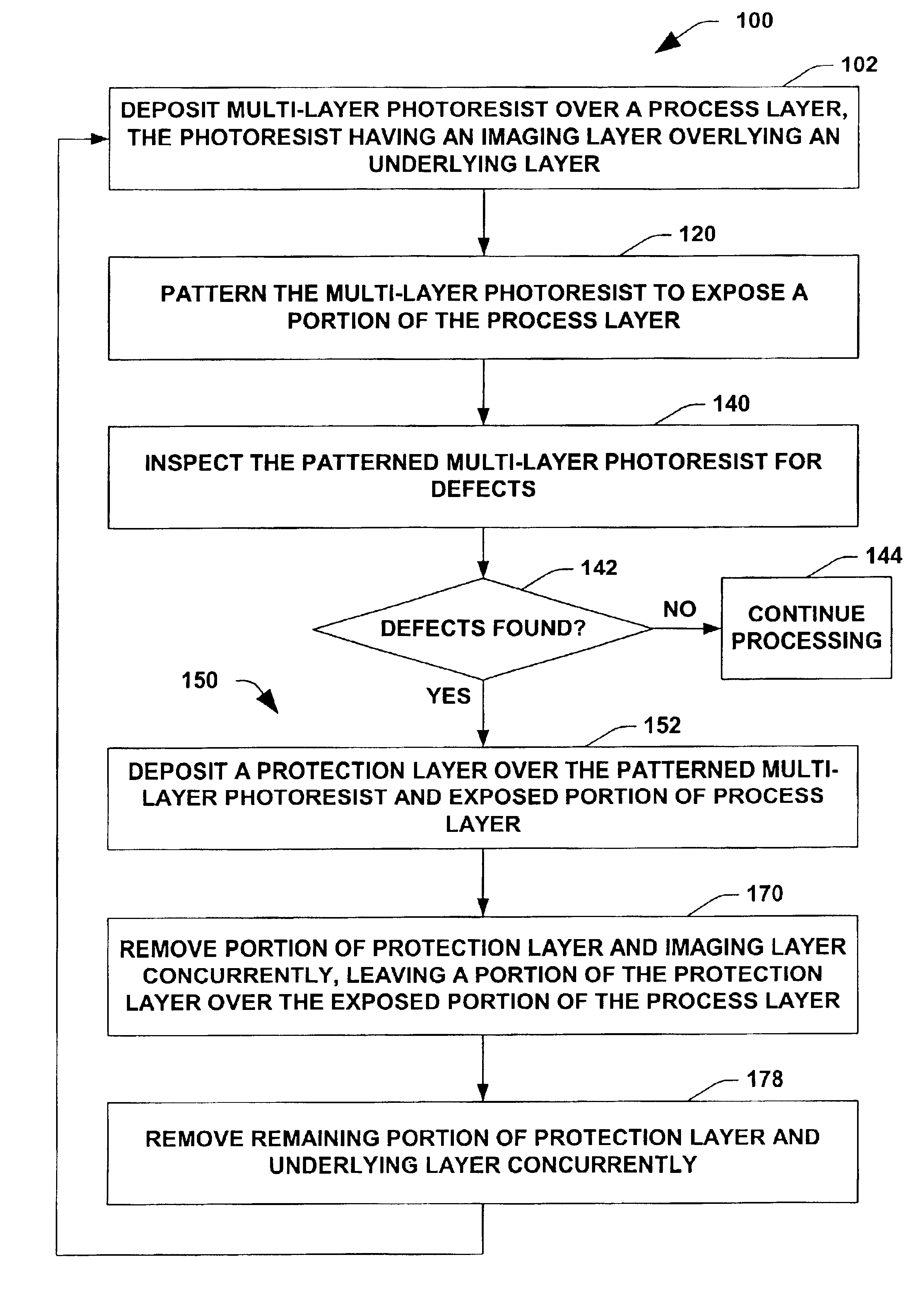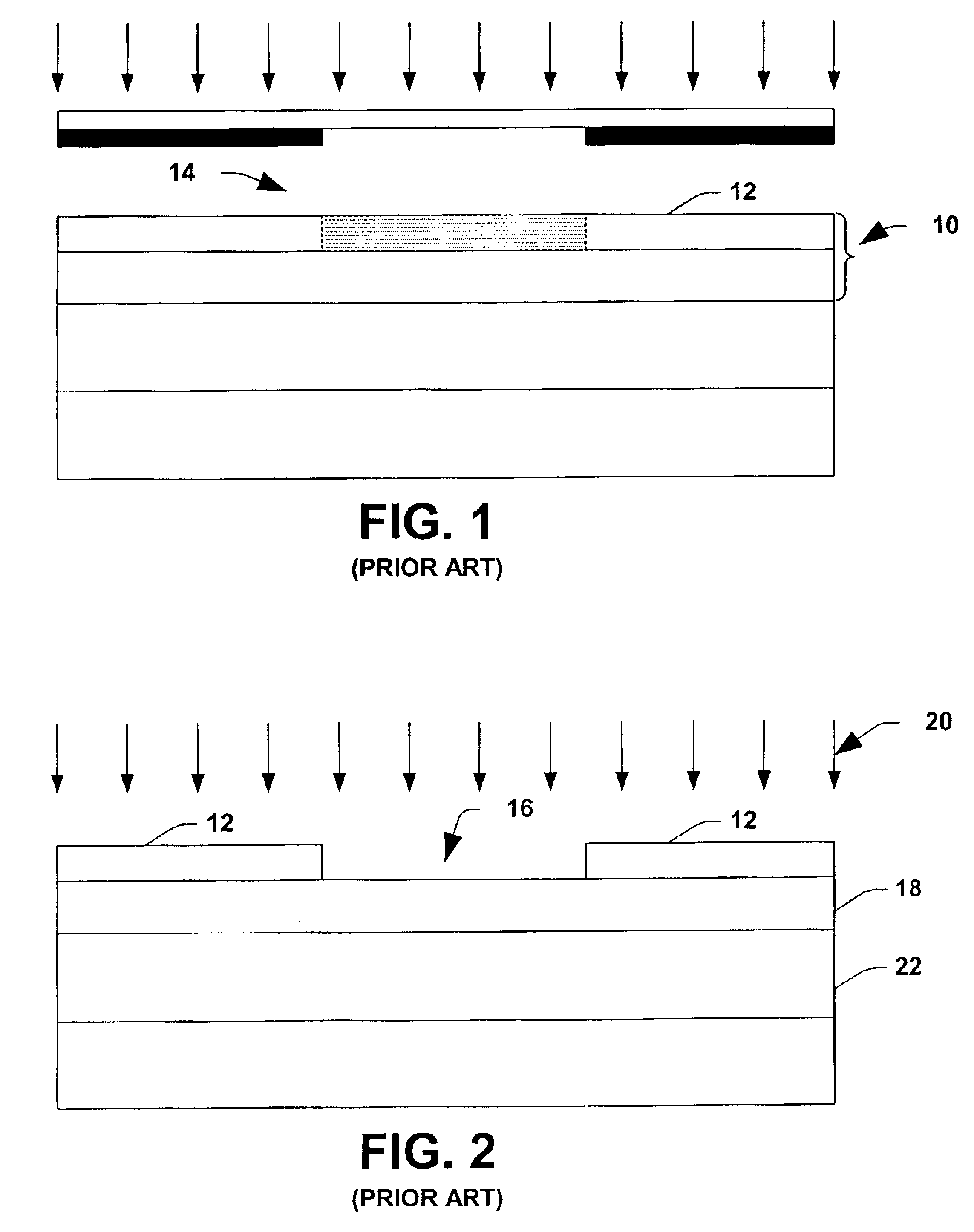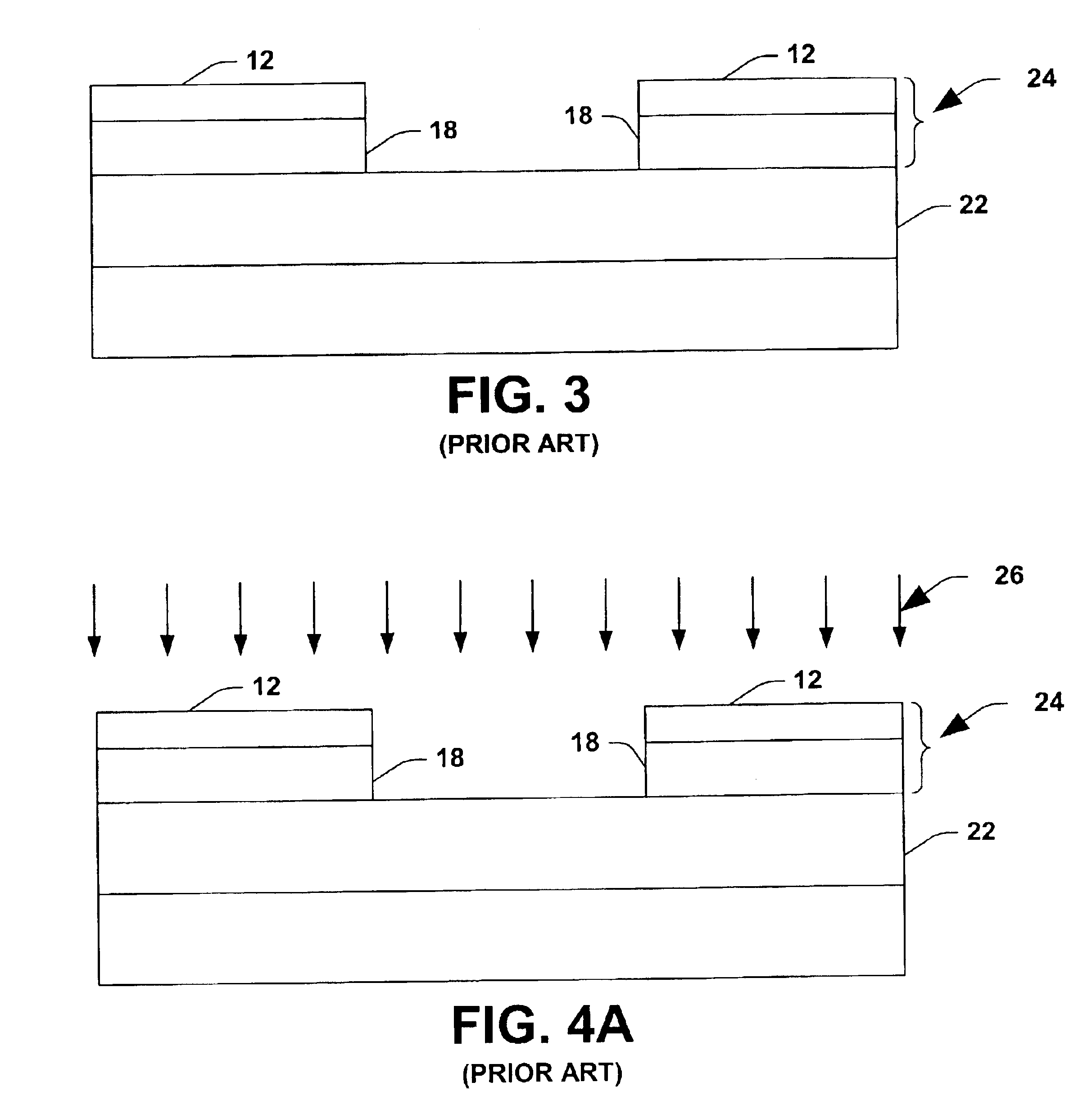Method for reworking a multi-layer photoresist following an underlayer development
- Summary
- Abstract
- Description
- Claims
- Application Information
AI Technical Summary
Benefits of technology
Problems solved by technology
Method used
Image
Examples
Embodiment Construction
The following is a detailed description of the present invention made in conjunction with the attached Figures, wherein like reference numerals will refer to like elements throughout. The present invention is directed to a method of re-working a multi-layer photoresist. After patterning the photoresist, a portion of an underlying process layer is exposed therethrough and the resist is inspected for defects. Upon an affirmative identification of a defect, the patterned multi-layer photoresist (which comprises an underlying layer covered by an imaging layer) is covered with a protection layer, which also covers the exposed portion of the process layer. The protection layer and imaging layer are then removed in a generally concurrent fashion, after which a portion of the protection layer still resides over the exposed process layer. The underlying layer and remaining protection layer are then removed in a generally concurrent fashion. The re-work methodology of the present invention ad...
PUM
 Login to View More
Login to View More Abstract
Description
Claims
Application Information
 Login to View More
Login to View More - R&D
- Intellectual Property
- Life Sciences
- Materials
- Tech Scout
- Unparalleled Data Quality
- Higher Quality Content
- 60% Fewer Hallucinations
Browse by: Latest US Patents, China's latest patents, Technical Efficacy Thesaurus, Application Domain, Technology Topic, Popular Technical Reports.
© 2025 PatSnap. All rights reserved.Legal|Privacy policy|Modern Slavery Act Transparency Statement|Sitemap|About US| Contact US: help@patsnap.com



